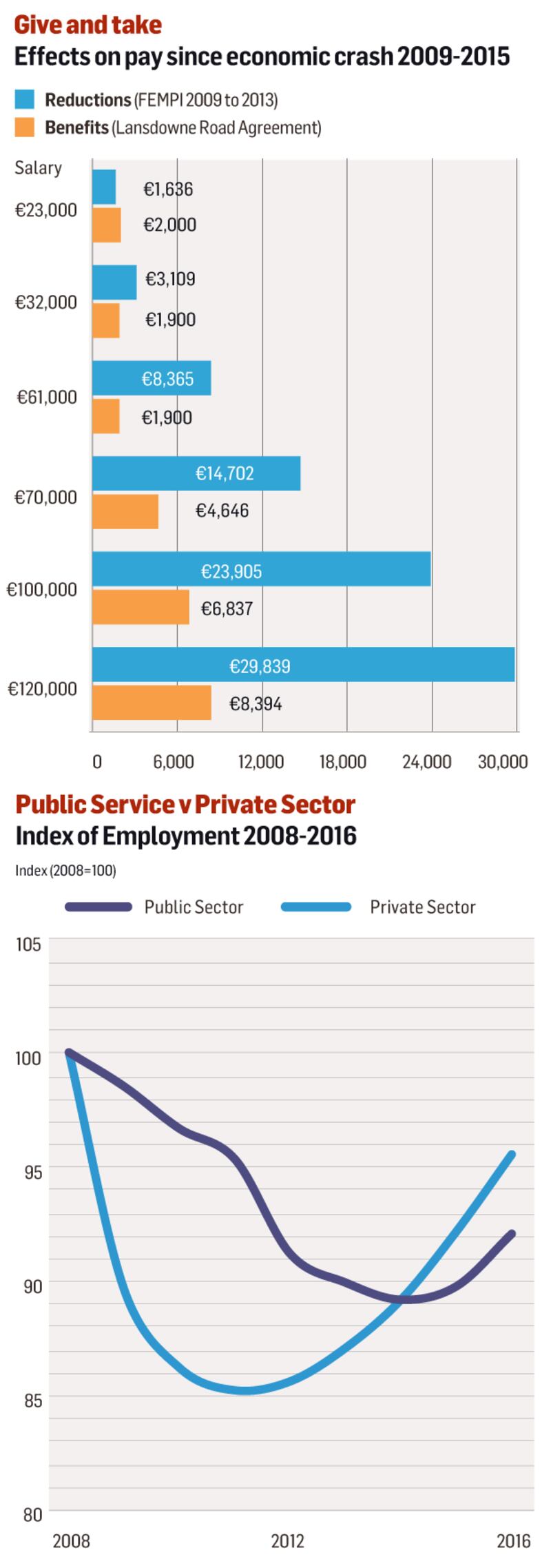Talks on a new public service pay agreement, due to begin in the coming weeks, will see the Government trade pay increases for additional pension contributions amongst thousands of middle-income public service workers.
However, a key battleground in the talks is likely to centre on the income threshold above which any new higher pension contribution will apply.
Another potential flashpoint will be an expected Government move to retain productivity measures conceded by unions in previous public service agreement such as the requirement on staff to work additional unpaid hours – a move which generates savings of about €70 million annually in the health sector.

Minister for Public Expenditure Paschal Donohoe also indicated on Tuesday that the Government would consider job security as "an important asset" in the forthcoming negotiations although the Public Service Pay Commission was unable to place a monetary value on security of tenure for State employees.
Early phase
As part of the new talks process, the Government is likely to concede that the existing public service pension levy – which currently averages out at about 5 per cent – will be wound down over the coming years, thus increasing take-home pay for employees.
However, in the early phase of a new agreement, middle-ranking public servants, many potentially earning about €50,000 a year, will see the benefits eroded by the increased pension contributions.
According to some informed sources, the Government has been considering seeking higher contributions from staff who are covered by the standard pre-2013 pension scheme and who earn more than €50,000.
Unions are expected to resist any move to set the threshold for the higher pension contributions at €50,000.
Under the previous Haddington Road agreement, pay cuts were set a level which excluded those earning less than €65,000.
In the talks, unions are also expected to press for specific increases for lower-paid State employees.
Any move by the Government to increase earnings by concentrating exclusively on scaling back the existing pension levy would not affect those earning less than about €28,000 as they are already outside the scope of the measure.
Valuable
The commission, which was set up to examine pay and pensions in the public service, issued its report on Tuesday in advance of the new talks, which are expected to begin before the end of May.
It found that about 250,000 public-service workers (those recruited before 2013 who account for the vast majority of State employees ) had more valuable pensions than those in the private sector.
It found that, in general, public service workers were paid more, and it advanced reasons for this, including higher levels of education.
It also found that Irish public service workers were among the best paid in the EU.
However, Ministers acknowledge that public-service workers will have to see some improvements in take-home pay if there is to be a new agreement.
The report found that staff covered by the pre-2013 standard or legacy pension scheme should contribute more.
It said the rate of increase and the grades and categories to which it should apply was a matter for negotiations between unions and Government but suggested the introduction of the higher contribution should “in conjunction” with an ending of the existing pension levy.
The commission said a critical factor in any future pay deal was the State’s ability to pay in the context of competing pressures on the public purse.
It also urged that future pay rises for State employees should be linked to workplace reforms and continuous improvements in productivity, in addition to other relevant criteria.








